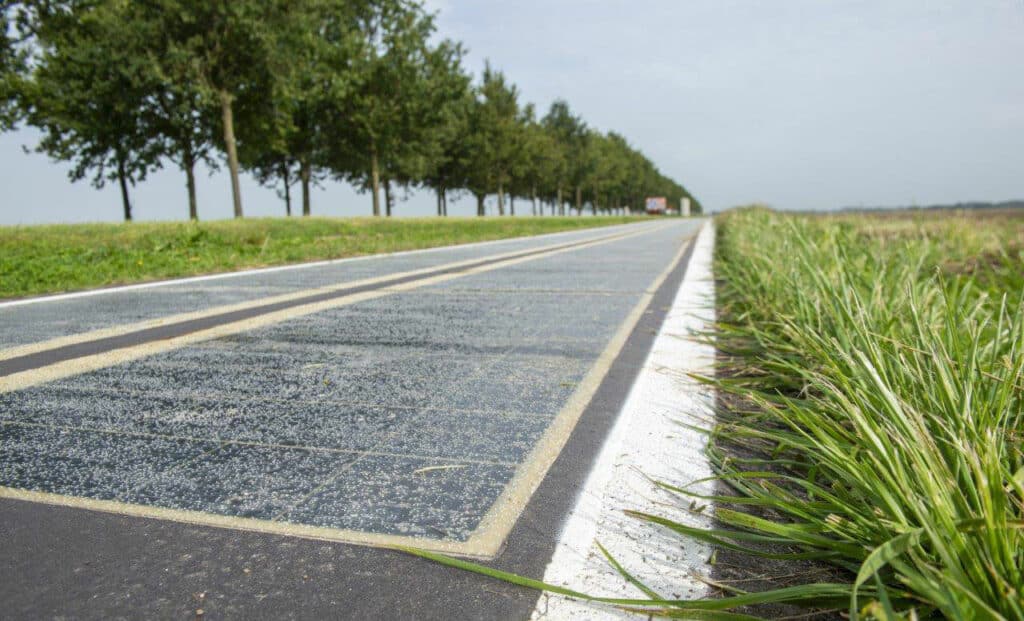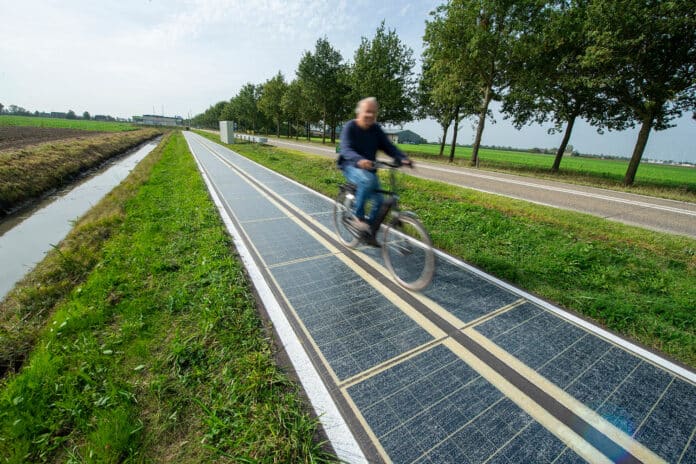Construction company the BAM Royal Group and the Colas Group’s Wattway subsidiary have installed two cycle paths equipped with Wattway photovoltaic coating in the Netherlands. With a surface area of 1,000 m2 each, the bike paths were commissioned by the provinces of North Brabant and North Holland. According to the company, this is the first time that such a large-scale project has been implemented in the country.
Wattway makes photovoltaic road surfaces designed to supply electricity using clean, renewable solar energy and is able to bear any type of vehicle traffic.
Wattway and BAM Royal Group have been working together since 2017 to advance renewable energy on mobility infrastructure. The latest two bike route developments illustrate the efforts being made by the provinces of North Holland and North Brabant to meet their targets in the fight against global warming. The purpose is to produce sustainable electricity by sharing the road space and without the need for additional space.
Photovoltaic energy production by transport infrastructure, particularly the cycle paths that span over 35,000 km in the Netherlands, shows a lot of potential as a new way to produce renewable electricity while limiting soil artificialization.

The Wattway project approaches renewable energy production in a unique way. Unlike other solar roadway projects or bike path installs in the Netherlands, Wattway’s trafficable, renewable energy-producing photovoltaic panels are incredibly thin and solid. Wattway panels can be glued directly onto existing cycle routes without needing to rip up the surface. This means that they can produce electricity without taking up valuable agricultural land or natural landscapes.
Each panel is made up of photovoltaic cells that convert sunlight into electricity. To protect the fragile cells and allow them to withstand daily bike traffic, they are coated in a multilayer substrate made of resins and polymers. The surface in contact with tires is also treated to provide the same grip as conventional road mixes. The system also includes an electrical cabinet with a battery to store the power produced by the panels.
Wattway, which claims to be the world’s first solar road surfacing company, has considerably evolved since the concept was launched at the end of 2015 and has since been rolled out across more than 50 pilot sites around the world. Thanks to feedback from these sites, the new generation of panels is even more efficient and robust, paving the way for its commercial launch from 2019.
The new Wattway installations are said to be more sustainable and profitable, with an increased power of 148 compared to 119 Wp/m2. The provinces have set a challenge for Wattway to produce 160 MWh/year of renewable energy in its first year, which will help to supply the Dutch grid. The site will be monitored and maintained for five years.
